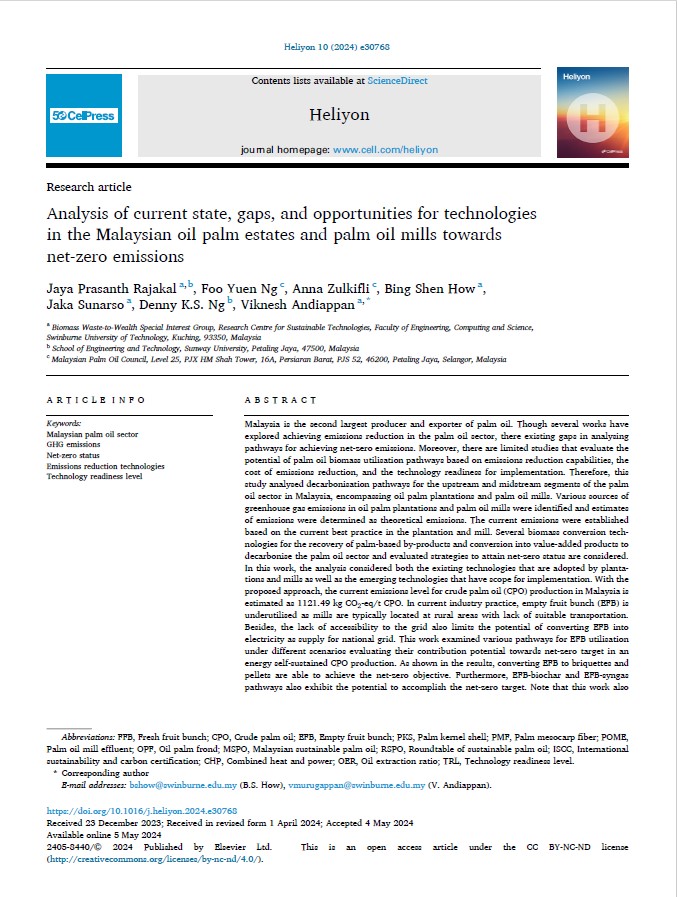
Keyword(s)
Author(s)
Jaya Prasanth Rajakal, Foo Yuen Ng, Anna Zulkifli, Bing Shen How, Jaka Sunarso, Denny K.S. Ng, Viknesh Andiappan
Country(ies)
Published Date
Access
DOI
Biomass Waste-to-Wealth Special Interest Group, Research Centre for Sustainable Technologies, Faculty of Engineering, Computing and Science,
Swinburne University of Technology, Kuching, 93350, Malaysia
School of Engineering and Technology, Sunway University, Petaling Jaya, 47500, Malaysia
Malaysian Palm Oil Council, Level 25, PJX HM Shah Tower, 16A, Persiaran Barat, PJS 52, 46200, Petaling Jaya, Selangor, Malaysia
Malaysia is the second largest producer and exporter of palm oil. Though several works have explored achieving emissions reduction in the palm oil sector, there existing gaps in analysing pathways for achieving net-zero emissions. Moreover, there are limited studies that evaluate the potential of palm oil biomass utilisation pathways based on emissions reduction capabilities, the cost of emissions reduction, and the technology readiness for implementation. Therefore, this study analysed decarbonisation pathways for the upstream and midstream segments of the palm oil sector in Malaysia, encompassing oil palm plantations and palm oil mills. Various sources of greenhouse gas emissions in oil palm plantations and palm oil mills were identified and estimates of emissions were determined as theoretical emissions. The current emissions were established based on the current best practice in the plantation and mill. Several biomass conversion technologies for the recovery of palm-based by-products and conversion into value-added products to decarbonise the palm oil sector and evaluated strategies to attain net-zero status are considered. In this work, the analysis considered both the existing technologies that are adopted by plantations and mills as well as the emerging technologies that have scope for implementation. With the proposed approach, the current emissions level for crude palm oil (CPO) production in Malaysia is estimated as 1121.49 kg CO2-eq/t CPO. In current industry practice, empty fruit bunch (EFB) is underutilised as mills are typically located at rural areas with lack of suitable transportation. Besides, the lack of accessibility to the grid also limits the potential of converting EFB into electricity as supply for national grid. This work examined various pathways for EFB utilisation under different scenarios evaluating their contribution potential towards net-zero target in an energy self-sustained CPO production. As shown in the results, converting EFB to briquettes and pellets are able to achieve the net-zero objective. Furthermore, EFB-biochar and EFB-syngas pathways also exhibit the potential to accomplish the net-zero target. Note that this work also assessed the technologies’ readiness levels, identified challenges in implementation, and proposed several recommendations.